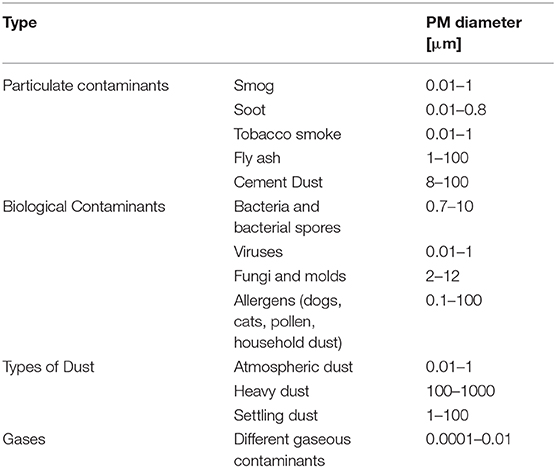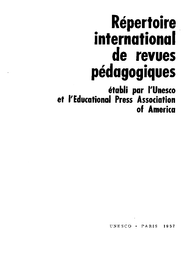P53 has pleiotropic functions including control of genomic plasticity and integrity. Here we report that p53 can bind to several transcription factor IIH–associated factors, including transcription–repair factors, XPD (Rad3) and XPB, as well as CSB involved in strand–specific DNA repair, via its C–terminal domain. We also found that wild–type, but not Arg273His mutant p53 inhibits.
| Names | |
|---|---|
| IUPAC name Tetraacetylethylenediamine | |
| Other names | |
| Identifiers | |
3D model (JSmol) | |
| ChemSpider |
|
| ECHA InfoCard | |
| UNII | |
CompTox Dashboard(EPA) | |
| |
| |
| Properties | |
| C10H16N2O4 | |
| Molar mass | 228.248 g·mol−1 |
| Appearance | Colorless solid |
| Density | 0.9 |
| Melting point | 149 to 154 °C (300 to 309 °F; 422 to 427 K) |
| 0.2 g/L @ 20 °C | |
Except where otherwise noted, data are given for materials in their standard state (at 25 °C [77 °F], 100 kPa). | |
| verify (what is ?) | |
| Infobox references |
- The full-length E2 protein, encoded by human papillomaviruses (HPVs), is a sequence-specific transcription factor found in all HPVs, including cancer-causing high risk HPV types 16 and 18 and wart-inducing low risk HPV types 6 and 11. To investigate whether E2 proteins encoded by high risk HPVs may function differentially from E2 proteins encoded by low risk HPVs and animal papillomaviruses.
- The development and practical application of welfare friendly aviary housing systems for laying hens, that generally emit more ammonia per hen than battery cage housing systems, would conflict with the Dutch policy to substantially reduce the total emission of ammonia from animal husbandry. This thesis describes the knowledge assessed by research on the ammonia emission levels of various types.
Tetraacetylethylenediamine, commonly abbreviated as TAED, is an organic compound with the formula (CH3C(O))2NCH2CH2N(C(O)CH3)2. This white solid is commonly used as a bleach activator in laundry detergents and for paper pulp. It is produced by acetylation of ethylenediamine.
A K De Environmental Chemistry Pdf Answer
Use and mechanism of action[edit]
TAED is an important component of laundry detergents that use 'active oxygen' bleaching agents. Active oxygen bleaching agents include sodium perborate, sodium percarbonate, sodium perphosphate, sodium persulfate, and urea peroxide. These compounds release hydrogen peroxide during the wash cycle, but Hydrogen peroxide is inefficient when used in temperatures below 60 °C (140 °F). TAED and hydrogen peroxide react to form peroxyacetic acid, a more efficient bleach, allowing lower temperature wash cycles, around 40 °C (104 °F). TAED was first used in a commercial laundry detergent in 1978 (Skip by Unilever).[1] Currently, TAED is the main bleach activator used in European laundry detergents and has an estimated annual consumption of 75 kt.[2]

Perhydrolysis[edit]
TAED reacts with alkaline peroxide via the process called perhydrolysis releasing of peracetic acid. The first perhydrolysis gives triacetylethylenediamine (TriAED) and the second gives diacetylethylenediamine (DAED):[3]
TAED typically provides only two equivalents of peracetic acid, although four are theoretically possible.[4]Competing with perhydrolysis, TAED also undergoes some hydrolysis, which is an unproductive pathway.[5][6]
A K De Environmental Chemistry Pdf Answers

Preparation[edit]
TAED is prepared in a two-stage process from ethylenediamine and acetic anhydride. The process is nearly quantitative.[7][8][9]
The acetic acid by-product is recycled as acetic anhydride.
Properties[edit]
Powdered TAED is stabilized by granulation with the aid of the sodium salt of carboxymethylcellulose (Na-CMC),[10] which are sometimes additionally coated blue or green. Despite the relatively low solubility of TAED in cool water, (1 g/l at 20 °C), the granulate dissolves rapidly in the washing liquor.
The peroxyacetic acid formed has bactericidal, virucidal and fungicidal properties, thereby enabling TAED with percarbonate to disinfect and deodorize.[11]
Ecology[edit]
Apple store offers. Triacetylethylenediamine is mostly non-toxic and easily biodegradable. TAED and its byproduct DAED have low aquatic ecotoxicity. Triacetylethylenediamine shows a very low toxicity in all exposure routes, is practically non-irritating effect on skin and eye, and does not give any indication of skin sensitization. Triacetylethylenediamine is not mutagenic and not teratogenic.[12] TAED, TriAED and DAED are all completely biodegradable and substantially removed during wastewater treatment.[13]
References[edit]
- ^Smulders E.; von Rybinski W.; Sung E.; Rähse W.; Steber J.; Wiebel F.; Nordskog A. (2002). 'Laundry Detergents'. Ullmann's Encyclopedia of Industrial Chemistry. Wiley-VCH.
- ^Reinhardt, G.; Borchers, G. (2009). 'Application of Bleaching Detergent Formulations'. In Zoller, Uri (ed.). Handbook of Detergents Part E: Applications. USA: CRC Press. ISBN9781574447576.
- ^D. Martin Davies and Michael E. Deary 'Kinetics of the hydrolysis and perhydrolysis of tetraacetylethylenediamine, a peroxide bleach activator' J. Chem. Soc., Perkin Trans. 2, 1991, pages 1549 - 1552. doi:10.1039/P29910001549.
- ^Farr, J. P.; Smith, W. L.; Steichen, D. S. (1992). 'Bleaching Agents'. Kirk-Othmer Encyclopedia of Chemical Technology Vol. 4 (4th ed.). John Wiley & Sons, Inc. pp. 271–299.CS1 maint: multiple names: authors list (link)
- ^Hauthal, G. H., Schmidt, H., Scholz, J., Hofmann, J. and Pritzkow W. (1990). 'Studies concerning the mechanism of bleach activation'. Tenside Surf. Det. 27 (3).CS1 maint: multiple names: authors list (link)
- ^Hofmann, J., Just, G., Pritzkow, W. and Schmidt, H. (1992). 'Bleaching activators and the mechanism of bleaching activation'. Journal für Praktische Chemie/Chemiker-Zeitung. 334 (4): 293–297. doi:10.1002/prac.19923340402.CS1 maint: multiple names: authors list (link)
- ^Europäische Patentanmeldung EPA 004 919, Verfahren zur Herstellung von N,N,N',N'-Tetraacetyl-ethylendiamin, Erfinder: G. Müller-Schiedmayer, R. Aigner, Anmelder: Hoechst AG, veröffentlicht am 31. Oktober 1979
- ^Europäische Patentanmeldung EPA 0 051 739 A1, Verfahren zur Herstellung von N,N,N',N'-Tetraacetylethylendiamin, Erfinder: W. Köhler et al., Anmelder: BASF AG, veröffentlicht am 19. Mai 1982
- ^Europäisches Patent EP 0 238 958 B1, Verfahren zur Reinigung von Tetraacetylethylendiamin, Erfinder: K. Köster, F.-J. Carduck, Anmelder: Henkel KG aA, veröffentlicht am 12. Juni 1991
- ^US-Patent US 5,100,576, Process for the preparation of a readily soluble bleach activator granulate with a long shelf life, Erfinder: J. Cramer et al., Anmelder: Hoechst AG, erteilt am 31. März 1992.
- ^Clariant Surfactant Division: The Clean and Clever Way of Bleaching - PERACTIVEArchived 2013-07-17 at the Wayback Machine (PDF; 865 kB), 08.99
- ^HERA Human & Environmental Risk Assessment on ingredients of European household cleaning products: Tetraacetylethylenediamine (TAED), CAS 10543-57-4 (PDF; 666 kB), Draft, DECEMBER 2002.
- ^Gilbert, P. A. (1992). 'TAED-Tetraacetylethylenediamine'. In de Oude, N. T. (ed.). The Handbook of Environmental Chemistry, Vol. 3 Part F Antropogenic Compounds: Detergents. Berlin: Springer-Verlag. ISBN354053797X.

Perhydrolysis[edit]
TAED reacts with alkaline peroxide via the process called perhydrolysis releasing of peracetic acid. The first perhydrolysis gives triacetylethylenediamine (TriAED) and the second gives diacetylethylenediamine (DAED):[3]
TAED typically provides only two equivalents of peracetic acid, although four are theoretically possible.[4]Competing with perhydrolysis, TAED also undergoes some hydrolysis, which is an unproductive pathway.[5][6]
A K De Environmental Chemistry Pdf Answers
Preparation[edit]
TAED is prepared in a two-stage process from ethylenediamine and acetic anhydride. The process is nearly quantitative.[7][8][9]
The acetic acid by-product is recycled as acetic anhydride.
Properties[edit]
Powdered TAED is stabilized by granulation with the aid of the sodium salt of carboxymethylcellulose (Na-CMC),[10] which are sometimes additionally coated blue or green. Despite the relatively low solubility of TAED in cool water, (1 g/l at 20 °C), the granulate dissolves rapidly in the washing liquor.
The peroxyacetic acid formed has bactericidal, virucidal and fungicidal properties, thereby enabling TAED with percarbonate to disinfect and deodorize.[11]
Ecology[edit]
Apple store offers. Triacetylethylenediamine is mostly non-toxic and easily biodegradable. TAED and its byproduct DAED have low aquatic ecotoxicity. Triacetylethylenediamine shows a very low toxicity in all exposure routes, is practically non-irritating effect on skin and eye, and does not give any indication of skin sensitization. Triacetylethylenediamine is not mutagenic and not teratogenic.[12] TAED, TriAED and DAED are all completely biodegradable and substantially removed during wastewater treatment.[13]
References[edit]
- ^Smulders E.; von Rybinski W.; Sung E.; Rähse W.; Steber J.; Wiebel F.; Nordskog A. (2002). 'Laundry Detergents'. Ullmann's Encyclopedia of Industrial Chemistry. Wiley-VCH.
- ^Reinhardt, G.; Borchers, G. (2009). 'Application of Bleaching Detergent Formulations'. In Zoller, Uri (ed.). Handbook of Detergents Part E: Applications. USA: CRC Press. ISBN9781574447576.
- ^D. Martin Davies and Michael E. Deary 'Kinetics of the hydrolysis and perhydrolysis of tetraacetylethylenediamine, a peroxide bleach activator' J. Chem. Soc., Perkin Trans. 2, 1991, pages 1549 - 1552. doi:10.1039/P29910001549.
- ^Farr, J. P.; Smith, W. L.; Steichen, D. S. (1992). 'Bleaching Agents'. Kirk-Othmer Encyclopedia of Chemical Technology Vol. 4 (4th ed.). John Wiley & Sons, Inc. pp. 271–299.CS1 maint: multiple names: authors list (link)
- ^Hauthal, G. H., Schmidt, H., Scholz, J., Hofmann, J. and Pritzkow W. (1990). 'Studies concerning the mechanism of bleach activation'. Tenside Surf. Det. 27 (3).CS1 maint: multiple names: authors list (link)
- ^Hofmann, J., Just, G., Pritzkow, W. and Schmidt, H. (1992). 'Bleaching activators and the mechanism of bleaching activation'. Journal für Praktische Chemie/Chemiker-Zeitung. 334 (4): 293–297. doi:10.1002/prac.19923340402.CS1 maint: multiple names: authors list (link)
- ^Europäische Patentanmeldung EPA 004 919, Verfahren zur Herstellung von N,N,N',N'-Tetraacetyl-ethylendiamin, Erfinder: G. Müller-Schiedmayer, R. Aigner, Anmelder: Hoechst AG, veröffentlicht am 31. Oktober 1979
- ^Europäische Patentanmeldung EPA 0 051 739 A1, Verfahren zur Herstellung von N,N,N',N'-Tetraacetylethylendiamin, Erfinder: W. Köhler et al., Anmelder: BASF AG, veröffentlicht am 19. Mai 1982
- ^Europäisches Patent EP 0 238 958 B1, Verfahren zur Reinigung von Tetraacetylethylendiamin, Erfinder: K. Köster, F.-J. Carduck, Anmelder: Henkel KG aA, veröffentlicht am 12. Juni 1991
- ^US-Patent US 5,100,576, Process for the preparation of a readily soluble bleach activator granulate with a long shelf life, Erfinder: J. Cramer et al., Anmelder: Hoechst AG, erteilt am 31. März 1992.
- ^Clariant Surfactant Division: The Clean and Clever Way of Bleaching - PERACTIVEArchived 2013-07-17 at the Wayback Machine (PDF; 865 kB), 08.99
- ^HERA Human & Environmental Risk Assessment on ingredients of European household cleaning products: Tetraacetylethylenediamine (TAED), CAS 10543-57-4 (PDF; 666 kB), Draft, DECEMBER 2002.
- ^Gilbert, P. A. (1992). 'TAED-Tetraacetylethylenediamine'. In de Oude, N. T. (ed.). The Handbook of Environmental Chemistry, Vol. 3 Part F Antropogenic Compounds: Detergents. Berlin: Springer-Verlag. ISBN354053797X.
